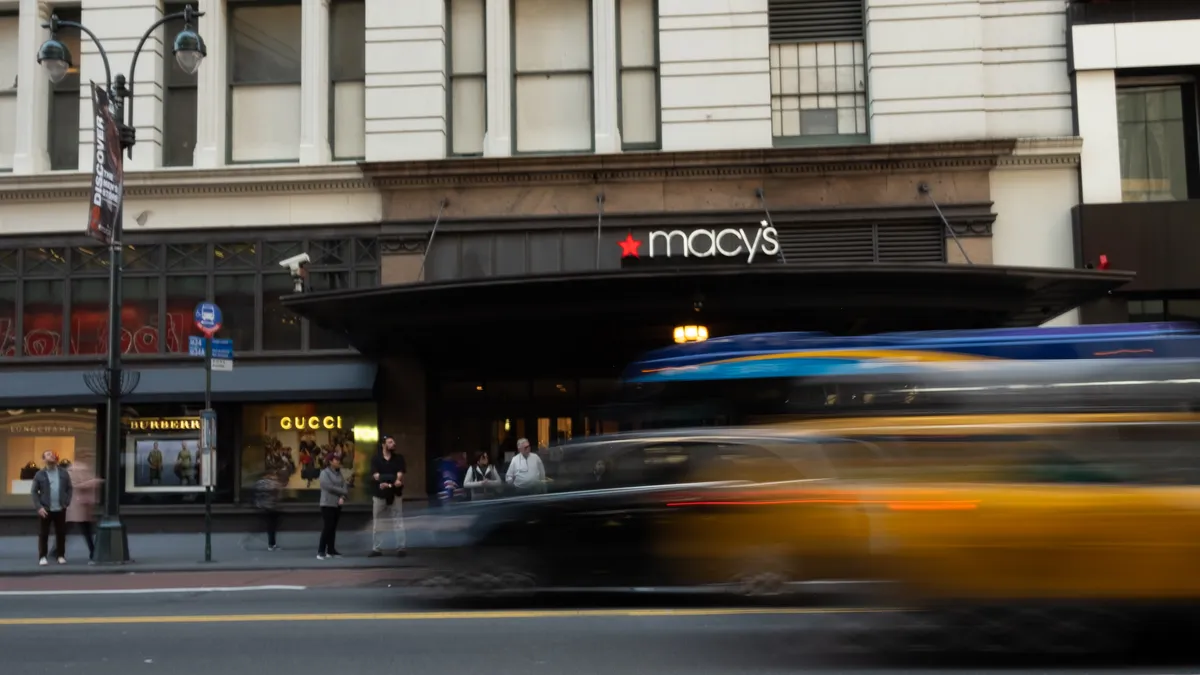It’s been another rough year at U.S. department stores so far, at least for those making their financial filings public. Several of them — public and private — have embarked on turnarounds or are contemplating changes that could be a final test of a challenged retail model.
Department stores continue to struggle
Department stores face many of the same obstacles, including competition from discount players and waning interest from younger generations, but their go-forward plans differ.
Macy’s Inc., after a drastic reduction in its namesake’s footprint a few years ago, plans to shutter another 150 of those stores. The Nordstrom family has bid $3.8 billion to take the company private, as they oversee a major expansion of its Rack off-price business. J.C. Penney is in the midst of a $1 billion overhaul of its merchandising, supply chain, customer experience and other areas, though it’s keeping its fleet largely intact. Kohl’s is taking similar steps while also tightening its budget, prompting its CEO earlier this year to warn that “efforts of this scale take time.” Saks Fifth Avenue owner HBC has agreed to acquire rival Neiman Marcus Group, which includes the namesake retailer and Bergdorf Goodman. That comes after HBC split up its various banners’ e-commerce operations and brick-and-mortar stores, then walked some of that back.
Dillard’s, where the founding family remains in control, is an outlier, focused on merchandising strength and tweaking its footprint, but making no major changes.
The year is not yet over, and department stores, famous for their seasonal windows and events, have long been busy in the fourth quarter. In fact, this year they top the list as a retail destination for nearly 60% of consumers, a 10-point jump from 2023, according to JLL’s holiday shopping report.
They have shopping malls to thank, because about 75% of mall goers go to department stores, and traffic to malls has bounced back in recent years, according to that report. Visits to various types of shopping centers rose again over most of the summer, according to research from Placer.ai.
That is a reversal of fortune for department stores, whose original purpose as anchors, envisioned some 70 years ago, was to drive traffic to the mall. Today, though, several analysts see them perpetually vulnerable to ceding market share to value-oriented retailers like off-pricers, undermining their growth outlooks. Department store sales rose year over year in only three months so far this year, with gains in February and May of less than 1%.
Department stores face rising competition from off-price retailers
Younger consumers are especially drawn to discounters, with the share of spending on value apparel by millennials and Gen Z shoppers up nearly four points in the last year, according to Bank of America research last month.
“Off-Price retailers have been major share gainers over Department Stores, in terms of both sales and EBIT dollars, over the past 10+ years,” UBS analysts led by Jay Sole said in a research note last month. “We think Department Stores are a very challenged group of stocks because of their weaker growth prospects.”













